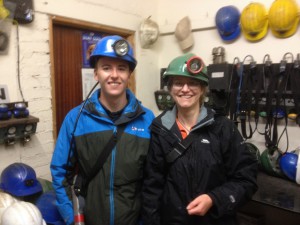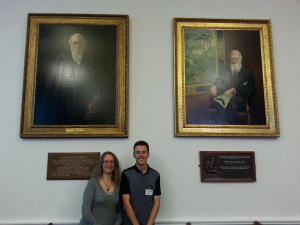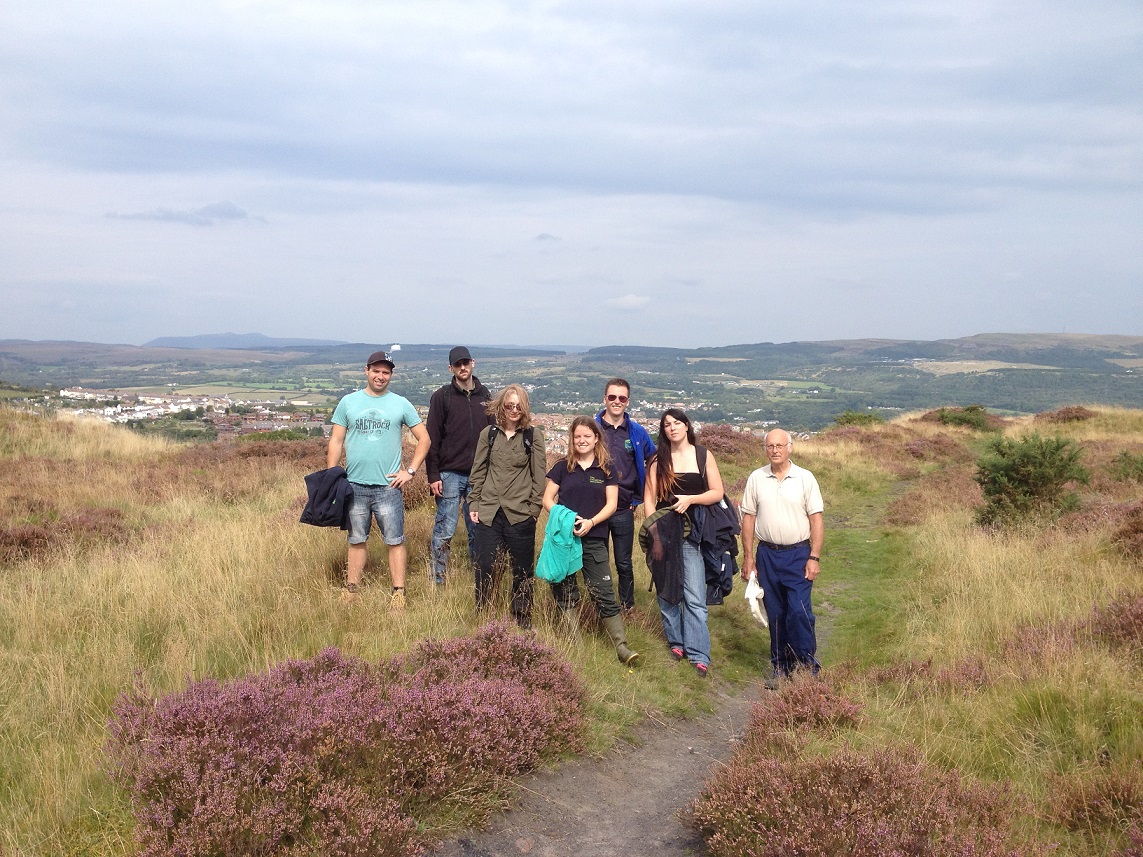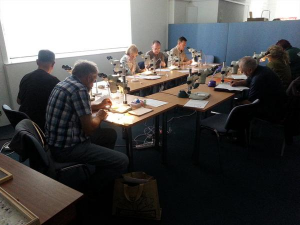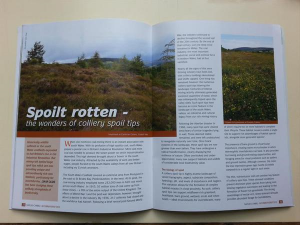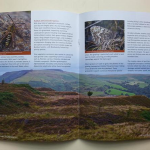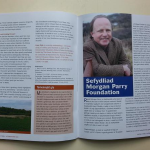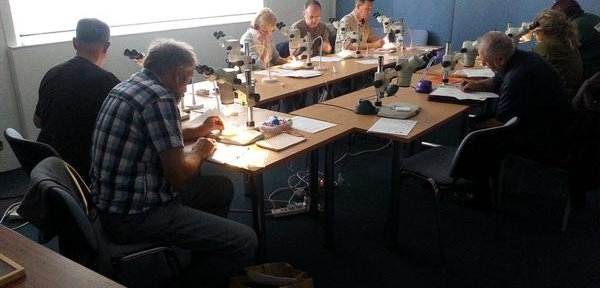
I’m sure I must be repeating myself every month when I say ‘this has been the busiest month of my traineeship so far’. My busy September schedule has included: attending two conferences and two training courses, attending a Buglife recorder’s day, delivering training for TCV staff and volunteers, visits to Oxford and the Forest of Dean, attending a local LBAP meeting, and lots more in between. Here’s some of the more interesting things I have done this month.
Forest of Dean Coalfield
As you are probably aware, I am just one of a total of six trainees on the Natural Talent Traineeship scheme. My nearest colleague is Ceri Watkins, based at Oxford University Natural History Museum. I was lucky enough to visit Ceri this month, spending one day at the museum learning some hard-core taxonomy and another attending the first field meeting of the new BENHS saproxylic group. The final day of my visit was spent exploring the Forest of Dean and its interesting history.
The Forest of Dean – a vast forest of picturesque natural beauty covering approximately 204 square miles – is potentially the last place you would think of as a coal mining area. Until my recent visit to the forest, I would never had put the two together. The Forest of Dean actually has a long history of mining, with Free Miners having mined coal for some 700 years. ‘Free miner’ is an ancient title given to coal/iron miners who have earned the right to mine personal plots. Over centuries, miners were continually called to campaigns that might involve siege or earth works – it was their skills in tunnelling under castle fortifications that earned them the right, by Royal decree, to mine anywhere in the forest without hindrance.
Not until the Industrial Revolution did coal extraction occur on any great scale. Deep mining began in the forest in 1904 and continued until Christmas Eve 1965, when the Northern United Colliery closed with the loss of many livelihoods. Northern United Colliery was the last deep mine to close in the Forest of Dean.
Coal extraction still continues in the Forest of Dean, however on a much smaller scale with several Free Mines following traditions of the 1700’s. I had the pleasure of visiting Hopewell Colliery, one of the larger free mines, during my visit to the Forest of Dean. Today, Hopewell Colliery is open as a museum where visitors may take a trip underground. I couldn’t resist going underground and it was an incredible experience, made all the more memorable by the fact our guide was a modern day free miner who still works the coal. The intricate network of tunnels, all dug by hand, were a genuine site to behold. Taking the time to visit a mining museum really makes you appreciate how hard life must have been in the mines, and how easy we have it today. If you ever get an opportunity to visit a mining museum such as Hopewell Colliery or the Big Pit National Coal Museum (Wales), I would definitely recommend it.
Contentious brownfield planning
During my travels around the Forest of Dean, I took a trip to the former site of Northern United Colliery – a site at the centre of much controversy. In 2012, the Forest of Dean District Council approved the go-ahead for a controversial proposal to re-develop an area of brownfield land known as the Cinderford Northern Quarter. There are a number of sites which make up the Cinderford Northern Quarter, including the former Northern United Colliery site. As the Forest of Dean District Council website states: ‘The former Northern United Colliery site and the surrounding area will be transformed into an extensively landscaped Enterprise Park, offering a wide range of development plots for light and general industrial uses, warehousing and business incubation space’.
The Gloucestershire Wildlife Trust points out that the Cinderford Northern Quarter has become a haven for wildlife and now supports rare bats, amphibians, reptiles, dormice, butterflies and orchids. There is currently much controversy with regards to the ecological impacts of this development. What has become clear throughout my traineeship is the lack of appreciation and acceptance of brownfields as biologically interesting places. They continue to be regarded as industrial wastelands and are continually under pressure from development. I really hope that the brownfield sites of the Cinderford Northern Quarter, and other biologically-interesting brownfields across the UK, will get the protection that they deserve in the near future.
Conferences
During the 9th and 10th September, I attended my first ever ‘Wales Biodiversity Partnership Conference’. This two day conference explored collective efforts to shape/effect change to improve biodiversity and ecosystems in Wales. The conference also explored the implications and opportunities contained in the forthcoming Environment Bill and the Well-being of Future Generations Act. The conference was very enjoyable and provided a prefect opportunity for networking.
Later in the month, I attended the ‘Invertebrate Link Symposium 2015’ at Linnean Society, London. It was such a privilege to visit the society and sit in the actual room where Charles Darwin and Alfred Russel Wallace made the first communication of their views on ‘The Origin of Species by natural Selection’ on 1st July 1858. Seeing unpublished manuscripts written by Linnaeus himself was also incredible! The talks on the day were fantastic, informative and interesting. I also met some truly inspirational people including Steven Falk, a legend in the invertebrate world when it comes to bee’s and hoverflies.
TCV Training
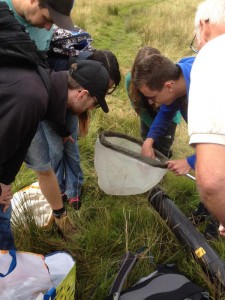
TCV Training Day – demonstrating use of sweep netting as a method of surveying grassland invertebrates
As part of my traineeship, I am required to deliver training to TCV staff and volunteers. Earlier in the month, I delivered an invertebrate training day for TCV volunteers based in Bristol. The training provided a brief overview of the different survey techniques used to target different invertebrates and habitats. With assistance from my TCV Natural Talent colleague Ceri Watkins, we identified some of the techniques used to survey invertebrates in grassland, woodland and heathland environments. We demonstrated moth trapping as a technique to survey moths by opening a trap that had been set-up over the previous night. I demonstrated the use of sweep nets and a suction sampler as a method of surveying grasslands. Ceri, with her expertise in woodland environments, demonstrated the use of a beating tray and other techniques to survey woodland invertebrates including saproxylic insects. I also introduced the group to colliery spoil habitats, explaining why they are good sites for invertebrates and some of the associated fauna. Running such a training course is entirely new to me. Although a little scary at the time, I feel the experience has been extremely valuable in my professional development and has greatly boosted my confidence. I look forward to building upon this experience in the coming month when I deliver invertebrate training in Northern Ireland.
Training Courses
As well as delivering my own training course, I have attended two brilliant training courses this month. The first ‘Recording Invertebrates in the Field’ was delivered by Phil Ward – Radnorshire County Recorder – at Ystradfawr Nature Reserve. This course identified the different survey techniques which can be used to record invertebrates in different habitats. This was one of the best training courses I have ever attended! I took a lot from the day; learning the techniques of tussocking and moss-sieving for invertebrates was particularly useful as I had never thought of utilising such techniques.
The other course I attended ‘Introduction to Solitary Wasps’ was run by Mark Pavett at National Museum of Wales. This course introduced me to some of the solitary wasp genera and was fantastic in familiarising me with the key characters used to identify solitary wasps.
Natur Cymru
For those who may be interested, I currently have an article about colliery spoil tips published in the Autumn Edition of Nature Cymru (Nature Wales). This article discusses the history of coal mining in South Wales, why spoil tips are biologically interesting, habitats and associated species, and the problems associated with the conservation of brownfield habitats.
Thanks for reading!
To find out more about the Natural Talent Traineeship, the Esmée Fairbairn Foundation, and National Museum Wales, please follow the links below.
Find out more about Natural Talent
Find out more about Esmee Fairbairn Foundation
Find out more about National Museum Wales

